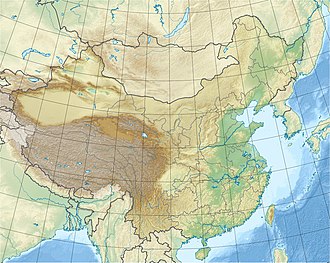| UTC time | 1936-04-01 02:31 |
|---|---|
| ISC event | n/a |
| USGS-ANSS | n/a |
| Local date | April 1, 1936 |
| Local time | 09:31 |
| Magnitude | Ms 6.75 |
| Depth | 7 km (4.3 mi) |
| Epicenter | 22°30′N109°24′E / 22.5°N 109.4°E |
| Fault | Lingshan Fault Zone |
| Areas affected | Guangxi, China |
| Max. intensity | CSIS IX |
| Casualties | 92 dead, 200 injured |
The 1936 Lingshan earthquake struck southern China's Guangxi (formerly part of Guangdong) on 1 April at 09:31 local time. It was the largest continental earthquake in southern China since historical records began. The earthquake had an estimated surface-wave magnitude of 6.75 and was associated with activity on the Fangcheng–Lingshan Fault Zone. At least 92 people were reported dead and over 5,800 homes were destroyed. Due to another earthquake occurring in Indonesia about five minutes prior, seismic records of this event are sparse.
